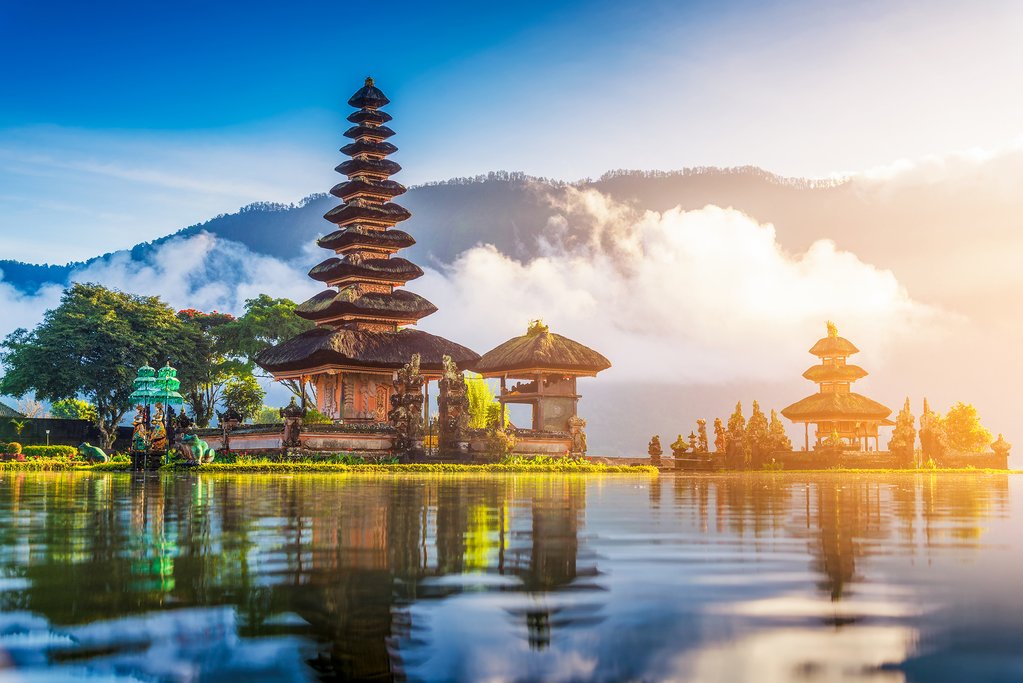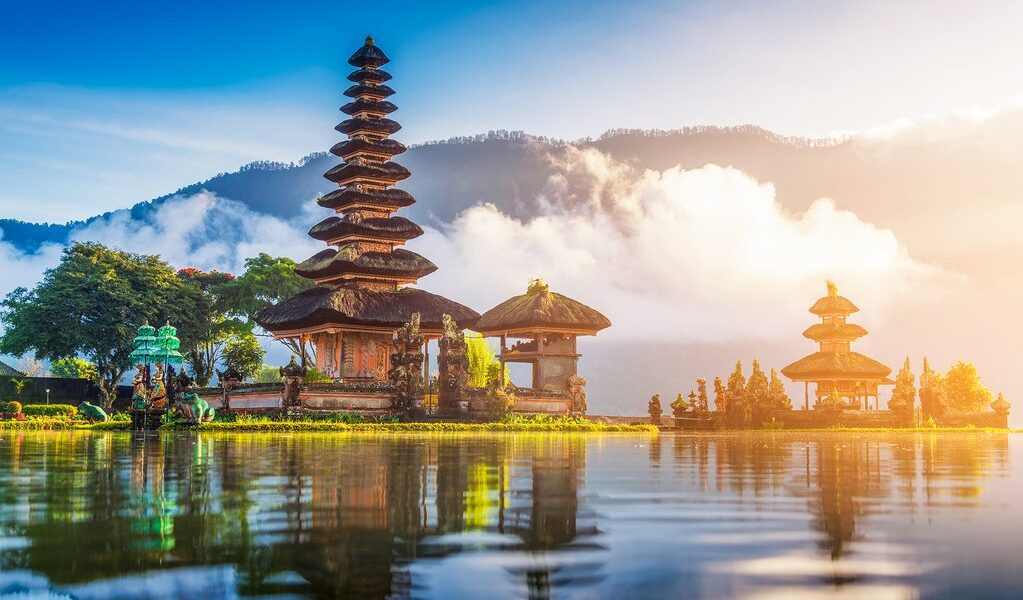
January is the wet season in Indonesia, and many of the islands get hit with rain—making it a less-than-ideal time if you’re seeking sunshine and beach-going activities. That said, it usually only rains for a small portion of the day and there are plenty of locations where the precipitation is lighter. Best of all, there are hardly any people around, so you won’t have to contend with the crowds that swarm beach resorts during other times of the year.
**Weather in Indonesia in January: A Comprehensive Guide**
There’s no getting around it: January in **Indonesia** is synonymous with rain. The archipelago, a vast expanse of islands straddling the equator, experiences the full force of the tropical monsoon season during this time. Tropical storms, born over the warm ocean waters, sweep across the region, impacting many of the islands with substantial rainfall and increased precipitation. However, it’s important to note that the impact of these storms varies significantly from one region to another. Some areas are far more susceptible to heavy downpours and flooding than others.
**Bali**, the ever-popular tourist destination, tends to be slightly less affected by the intense rains compared to some of its neighboring islands. While it certainly receives its fair share of precipitation, the overall impact is generally less severe. In contrast, destinations such as **Nusa Tenggara**, **Lombok**, and **Flores**, located further east, often find themselves inundated with considerable amounts of rainfall. These areas can experience prolonged periods of heavy downpours, potentially leading to localized flooding and disruptions to travel plans. Understanding these regional variations is key to planning your Indonesian adventure in January.
Despite the presence of rain, the temperature remains consistently warm throughout **Indonesia** during January. The tropical climate ensures that it’s hot just about everywhere. Daytime highs typically range from a comfortable 85°F to a sweltering 95°F. Some regions, particularly around **East Java**, tend to experience the hottest temperatures, making it essential to pack light and breathable clothing. Even as the sun sets, the temperature remains pleasantly warm, with evening temperatures dropping only slightly, hovering around 73°F to 80°F at night. This consistent warmth makes it ideal for enjoying the balmy evenings, provided you’re prepared for the occasional shower.
**Embrace the Quiet: Crowds and Costs in January**
One of the most compelling reasons to consider a January vacation to **Indonesia** is the relative absence of crowds. Unlike the peak tourist seasons, when popular destinations are teeming with visitors, January offers a much more tranquil experience. Although **Bali** and other well-known locations maintain a degree of tourism throughout the year, many other destinations become virtually deserted due to the less-than-ideal weather conditions. This means you’ll have more opportunities to immerse yourself in the local culture, explore at your own pace, and avoid the hustle and bustle of crowded tourist attractions.
The perception of constant rain can deter many travelers, leading to a significant drop in visitor numbers. However, the reality is often more nuanced. The rains typically only last for a few hours each day, often occurring either in the morning or the early afternoon. The remainder of the day is frequently characterized by warm sunshine, blue skies, and pleasant weather. By adjusting your itinerary to accommodate these short bursts of rain, you can still enjoy a fulfilling and memorable vacation.
As long as you’re prepared to seek shelter occasionally and equip yourself with a reliable raincoat, January presents an excellent opportunity to take advantage of the smaller crowd sizes and less-packed beaches. This provides a more intimate and authentic travel experience, allowing you to connect with the local environment and culture on a deeper level.
Furthermore, traveling to **Indonesia** in January can also be financially advantageous. January is an excellent month for finding deals on both airfare and lodging. The lower demand translates to lower prices, making it possible to experience the beauty and wonder of **Indonesia** without breaking the bank. This makes January an incredible month for budget-conscious travelers seeking a unique and rewarding vacation.
**Navigating the Archipelago: Where to Go in January**
**Bali** undeniably stands out as one of the most desirable destinations for a January trip to **Indonesia**. The island’s popularity is well-deserved, as it tends to experience less severe rainfall compared to some other islands in the archipelago. Furthermore, **Bali**’s well-developed tourism infrastructure ensures that it’s well-equipped to handle the challenges posed by inclement weather.
The roads in **Bali** are generally less prone to washing out, especially when compared to more remote and less developed islands. This ensures greater accessibility and ease of transportation, allowing you to explore the island’s diverse landscapes without worrying about road closures or disruptions. Moreover, the restaurants, bars, and tourist attractions in **Bali** have implemented measures to mitigate the impact of bad weather, offering alternative activities and entertainment options during storms.
**Java**, the most populous island in **Indonesia**, generally experiences more rain than **Bali** during this time of year. However, the eastern part of **Java** tends to be less susceptible to the most severe storms. The temperatures on **Java** remain warm and pleasant, typically hovering around 82°F to 86°F during the day, making it a reasonably good destination for a January vacation.
For a more off-the-beaten-path experience, consider exploring the lesser-known **Moluccas Islands**, also known as the **Spice Islands**. These islands boast a unique climate, with their wet season occurring at a different time of year than in other parts of **Indonesia**. As a result, most of the **Moluccas Islands** experience drier conditions in January, making them an attractive alternative for those seeking sunshine and outdoor adventures.
Conversely, **Sumatra**, **Nusa Tenggara**, **Lombok**, and **Flores** are generally extremely wet and prone to flooding during January. In fact, January is often one of the three wettest months of the year in these regions, along with November and December. While it’s still possible to enjoy a vacation to these islands during this time, particularly if you’re planning jungle excursions instead of beach activities, it’s essential to come prepared with high-quality rain gear and an open mind, ready to embrace the possibility of getting wet.
**Unveiling the Possibilities: What to Do in Indonesia in January**
Even with the occasional rain showers, **Bali** offers a plethora of activities to enjoy in January. While the beaches may experience intermittent rainfall, it’s an excellent time to venture into the central part of the island, where destinations like **Ubud** and its surrounding areas are lush and verdant. January is arguably the best time of year to wander through the region’s picturesque rice paddies, which are vibrant green and teeming with life.
Don’t miss the opportunity to visit the famous **Monkey Forest** (**Mandala Suci Wenara Wana**), where you’ll be greeted by dozens of the forest’s 1,000+ Balinese long-tailed monkeys who love to interact with tourists. Other popular options include meditating and relaxing at the renowned **Yoga Barn** or visiting the talented silversmiths in the **Celuk village**, located just 30 minutes outside of **Ubud**.
For a scenic excursion further north, consider taking a trip to the **Ulun Danu Temple**, a stunning water temple that sits majestically on the edge of **Baratan Lake** in **Bedugul**. The wet season often provides the best opportunities to witness breathtaking sunrises from this iconic temple, which honors the goddess of the lake. While you’re in the **Bedugul** area, seek an adrenaline rush at the **Bali Treetop Adventure Park** or take a leisurely stroll through the serene **Bali Botanic Garden**.
If you decide to explore **Java**, it’s advisable to skip strenuous mountain climbs, such as hiking up **Mt. Bromo**, as the rain can make these activities challenging and unpleasant. Instead, January is an excellent month to explore **Surabaya**, the archipelago’s second-largest city. **Surabaya** offers a diverse range of indoor activities, including museums, restaurants, and shopping opportunities, providing ample entertainment even on rainy days.
The **Moluccas**, with their distinct wet and dry seasons, offer a unique opportunity for January travel. With less rain than other parts of **Indonesia**, you can enjoy sightseeing in destinations such as **Manusela National Park** on **Seram Island**, a quaint island ecoregion that boasts stunning birds and unique flora and fauna. Alternatively, consider hiking around **Halmahera** or **Ternate** islands, which offer breathtaking landscapes and opportunities for outdoor exploration. However, it’s important to note that these destinations have fewer amenities, and you may find that wifi connectivity is spottier, and dining and nightlife options are limited.
**Festive Celebrations: Events in January**
**Chinese New Year:** In **Indonesia**, locals celebrate the **Chinese New Year**, which typically occurs toward the end of January, with great enthusiasm. Although the celebrations may not be as grand as those found in some neighboring Southeast Asian countries, cities like **Singaraja** in northern **Bali** host vibrant dragon parades, while nightlife hotspots like **Kuta Beach** come alive with festive celebrations.
B-1221

